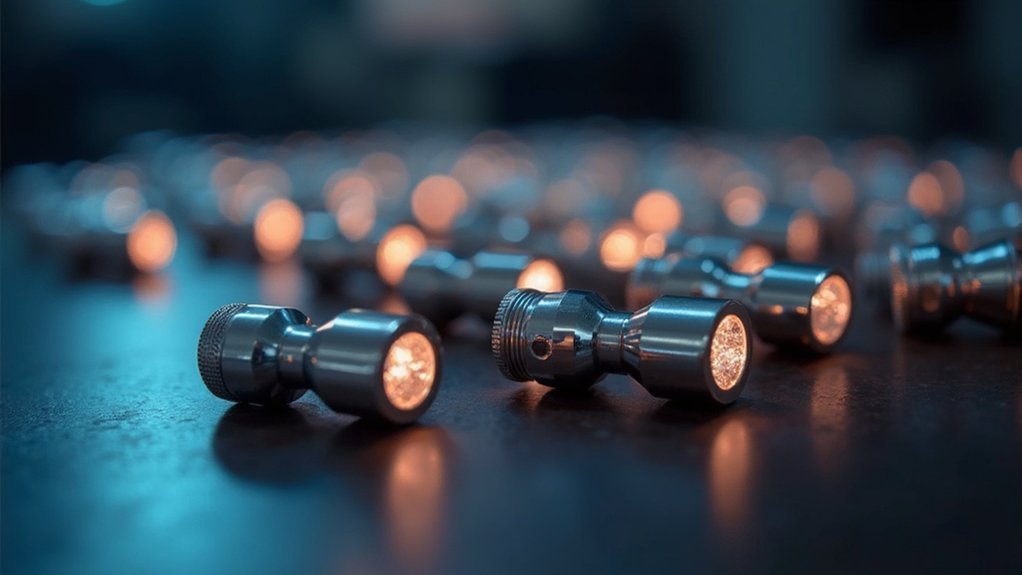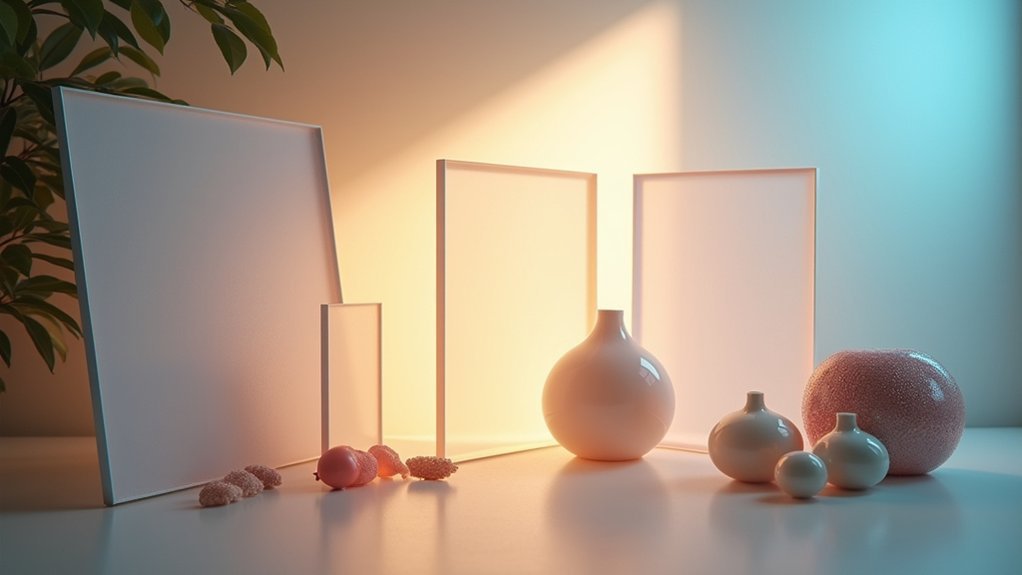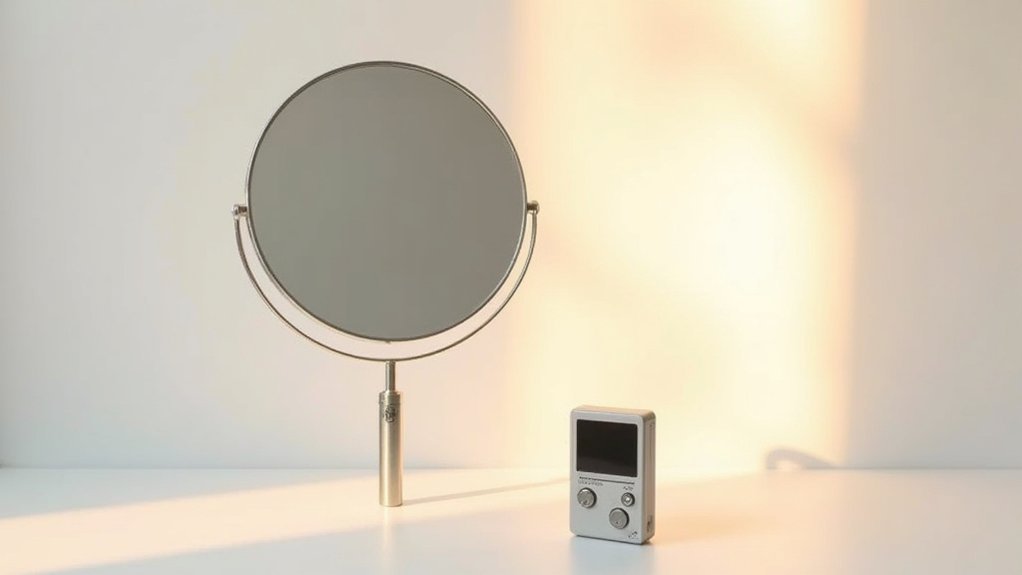Three essential reflected light tools that will dramatically improve your imaging include professional light reflectors that direct and soften illumination, adjustable mirror systems that provide precise control over light direction and intensity, and diffusion panels that minimize harsh reflections while maintaining detail. You’ll eliminate distracting shadows, enhance specimen highlighting, and achieve superior color accuracy across your microscope photography. These techniques transform ordinary observations into exceptional visual data worth exploring further.
Professional Light Reflectors: Essential Tools for Microscope Illumination

Precision illumination stands at the heart of successful microscopy. When you’re capturing microscope photography, professional light reflectors become indispensable for achieving ideal results. These specialized tools enhance your specimen’s visibility by directing and softening light where you need it most.
Available in flat and curved designs, these reflectors allow for angle manipulation that eliminates shadows while maximizing detail and contrast. You’ll notice significant improvements in image clarity as the reflectors distribute light evenly across your specimen.
Many high-quality options are engineered for specific light wavelengths, ensuring superior color accuracy in your final images. For maximum flexibility, look for systems with adjustable mounts that let you fine-tune lighting conditions based on your specific specimen and microscope setup.
This precision control transforms ordinary observations into exceptional visual data.
Adjustable Mirror Systems for Precision Specimen Highlighting
When examining minute specimen details, adjustable mirror systems provide unparalleled control over light direction and intensity.
You’ll achieve superior specimen highlighting by manipulating reflected light to illuminate key features while minimizing distracting shadows. These sophisticated lighting systems transform micro photography by giving you precision control over how light interacts with reflective surfaces.
Precision mirror manipulation unveils hidden specimen details by directing light exactly where it’s needed.
For best results with adjustable mirrors, consider these essential techniques:
- Position multiple mirrors at complementary angles to create balanced lighting
- Use graduated scales to maintain consistent setups for reproducible results
- Make incremental adjustments to reveal textural detail enhancement
- Combine different mirror positions to eliminate harsh shadows while preserving depth
Diffusion Panels and Light Modification Accessories

Light transformers in the macro world, diffusion panels serve as essential tools for controlling harsh reflections when photographing delicate specimens. You’ll find these panels particularly useful for creating soft light that minimizes shadows while maintaining detail. When positioned correctly, they prevent color cast issues, helping you achieve consistent white balance without post-processing adjustments.
| Accessory Type | Primary Function | Best For | Camera Settings |
|---|---|---|---|
| Fabric Diffusers | Soften direct light | Transparent specimens | Lower ISO values |
| Reflector Cards | Redirect fill light | Dark subjects | Faster shutter speeds |
| Plastic Panels | Even light distribution | Reflective surfaces | Smaller apertures |
| Frame-mounted Diffusers | Stable positioning | Long sessions | Manual white balance |
Combine different light modification tools to control the direction and quality of illumination. Your specimens will appear more three-dimensional with properly diffused lighting from multiple light sources.
Frequently Asked Questions
How to Get Reflected Light in Photos?
To get reflected light in photos, you’ll need reflective surfaces like white walls or foam boards. Position them to bounce natural light onto your subject, eliminating harsh shadows and creating softer, more flattering illumination.
What Do Photographers Use to Reflect Light?
You’ll find photographers using reflectors, white cards, mirrors, metallic foils, and collapsible gold/silver surfaces to bounce light. These tools help fill shadows, create balanced exposure, and achieve your desired lighting mood when shooting.
What Are the Best Camera Settings for Reflections?
For reflections, you’ll want to use f/8-f/11 for depth, a low ISO (100-400) to reduce noise, and adjust white balance for accurate colors. Consider a tripod for slower shutter speeds when needed.
How Do You Photograph Highly Reflective Objects?
Use polarized filters to minimize glare, diffuse light with softboxes, and shoot from multiple angles. You’ll want to position white boards to control reflections and use a tripod for stability at f/5.6-f/11.
In Summary
Whether you’re a seasoned researcher or amateur scientist, you’ll find reflected light tools indispensable for your microscopy work. Professional reflectors eliminate harsh shadows, adjustable mirrors let you direct light precisely where it’s needed, and diffusion panels create even illumination across specimens. By incorporating these three tools into your imaging setup, you’ll capture clearer, more detailed microscopic photographs with better contrast and depth.





Leave a Reply